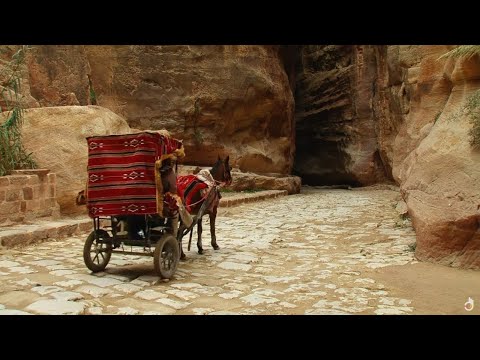
Nestled in the heart of Jordan’s rugged desert landscape lies Petra, an ancient city that whispers tales of a civilization both ingenious and mysterious. “Petra and the Lost Kingdom of the Nabataeans” is a compelling documentary that delves into this archaeological wonder, exploring its historical significance, architectural marvels, and the enigmatic people who built it—the Nabataeans.
### The Heart of Petra
The documentary begins with sweeping aerial shots of Petra’s most iconic structure, Al-Khazneh (The Treasury), whose intricate facade is dramatically carved directly into the pink sandstone cliff face. This image sets the stage for a journey back in time to when Petra was a thriving hub of trade, culture, and architectural innovation.
### Who were the Nabataeans?
The Nabataeans were an Arab people who emerged in northwestern Arabia around the 4th century BCE and later controlled a vast trading network in the Middle East. The documentary highlights their role as master traders who facilitated commerce between China, India, Egypt, Greece, Rome, and Southern Arabia. Their wealth from trade in frankincense and myrrh allowed them to carve out a kingdom that flourished for centuries.
Experts interviewed in the documentary emphasize how the Nabataeans were not only traders but also pioneers in hydraulic engineering. They developed sophisticated water collection systems to survive in arid environments—systems which are examined through detailed animations showing their operation and design.
### Architectural Wonders
“Petra and the Lost Kingdom of the Nabataeans” takes viewers on a detailed tour through various landmarks within Petra beyond Al-Khazneh. It explains how each structure was not merely built but artistically carved from top down out of rock cliffs. Significant structures such as Ad-Deir (The Monastery), with its monumental facade and impressive crown atop a mountain ridge; and The Great Temple complex—thought to be one of Petra’s main religious hubs—are showcased.
The documentary also explores lesser-known aspects of daily life in ancient Petra through CGI reconstructions based on archaeological findings. These include homes etched into cliffsides, bustling market scenes reflecting a melting pot of cultures due to trade networks, and intricate rock-cut tombs which illustrate beliefs about death and afterlife.
### Decline and Rediscovery
How did such an advanced civilization vanish? The film explores theories surrounding Petra’s decline which include changing trade routes that bypassed Petra at around 300 CE following Roman annexation under Trajan. It also discusses natural disasters like earthquakes that devastated their sophisticated water systems.
Petra’s rediscovery by Swiss explorer Johann Ludwig Burckhardt in 1812 is portrayed as a pivotal moment for Western archaeology—an event brought dramatically to life through re-enactments within the documentary.
### Cultural Legacy
In its concluding segments, “Petra and The Lost Kingdom of The Nabataeans” touches on ongoing archaeological efforts that continue unveiling secrets about this ancient civilization’s way of life. It also discusses global impacts seen today inspired by Nabatean culture including adaptations seen across modern architecture reflecting their stone-carving legacies.
Moreover, it addresses efforts to preserve this UNESCO World Heritage site against threats from tourism overload which can lead to erosion—a challenge being answered with both local advocacy groups working alongside international agencies.
### Conclusion
Through breathtaking cinematography combined with insightful scholarly interviews and state-of-the-art visual effects, “Petra And The Lost Kingdom Of The Nabataeans” offers an enriching narrative celebrating one of history’s most fascinating civilizations. This documentary not only educates but also captivates imagination—ensuring viewers will regard Petra not just as static ruins but as vibrant testament to human creativity resilience amidst seemingly insurmountable challenges.
